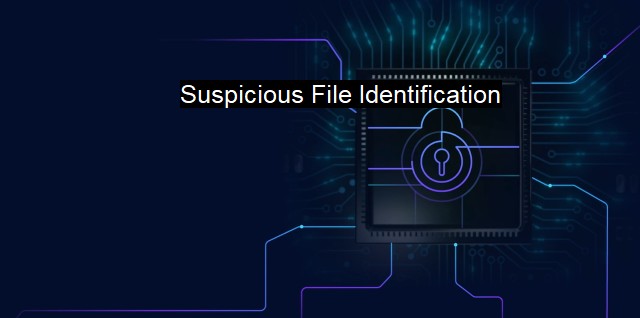What is Suspicious File Identification?
Suspicious File Identification: Strengthening Cybersecurity Practices with Advanced Antivirus Techniques
Suspicious file identification is one of the most significant tasks in the landscape of cybersecurity. This is essential given the growing number of various cyber threats. Suspicious file identification refers to the process or mechanism used to pinpoint and mark files that raise suspicion. These files often pose risks that may compromise the security of a system through the execution of malicious code that can harm the system.To comprehend why systems and networks need suspicious file identification, it's necessary to first understand that any downloaded or generated file has the capability of containing malicious software, known as malware, which may disrupt computer functions, steal sensitive data, or gain unauthorized access to system resources. These suspicious files, if not detected and dealt with appropriately, can result in substantial damage leading to data breaches and tremendous financial losses. In an era where any information integrates into the digital form, security is a facility that needs assiduous safeguarding without room for slips.
Suspicious file identification comes under the broad segment of antivirus activities, which aim to proactively protect devices, servers, and computer networks from intrusions, and 'heal' or dispose of those that slip under the radar. Antivirus employs various techniques to achieve this, one of which is suspicious file identification. These mechanisms scrutinize files without resorting to a signature database, instead of examining each file's isometrics that shouldn’t be confused with baseline data.
Most antivirus operates by comparing file signatures against an established database of known threats, which works well for known malware variations but struggles against novel, unrecognized versions. This is where suspicious file identification's value is seen as it helps identify unique or undefined threat variants based on their behavior rather than relying on existing writing database patterns.
The identification process typically begins when an unknown file enters a system. In antivirus software, there are different techniques, namely heuristics and behavior checking. Heuristics checks file code for indications of malicious intent, essentially predicting based on past experiences. Behavior checking, on the contrary, monitors what the file does once accessed, identifying whether it behaves similarly to known malware.
These flagged suspicious files then get isolated in what is known as a "sandbox," a secure environment where the files can be observed and analyzed without impacting the systems. Through this mechanism, any potentially harmful activities are detected and actions appropriate for their eradication are taken. This may include cleaning, quarantine, or deletion of the files.
While high levels of accuracy are usually not guaranteed in suspicious file identification, this mode of antivirus activities is incredibly responsive in recognizing new pathways of threats, thus enabling quicker development of corrective patches.
The significance of suspicious file identification is skyrocketing in tandem with the surge in cyber threats. It plays a crucial role in maintaining system and network integrity by examining, analyzing, marrying the past experiences to the present, extrapolating into the future threats, and taking recluse in corrective measures.
It is worth noting that no protective measure is foolproof. Potentially false positives can occur, identifying benign files as threatening. Thus, it is advisable to pair suspicious file identification with other protective measures to create a comprehensive and multifaceted cybersecurity strategy.
Suspicious file identification is an indispensable part of modern cybersecurity efforts. While it does present some shortcomings like the possibility of false positives, its benefits that couple detection, extrapolation, and deterrence of potential threats far outweigh its potential slips helping a system secure it from dangerous incursions.

Suspicious File Identification FAQs
What is suspicious file identification in cybersecurity?
Suspicious file identification is the process of analyzing a file for potential threats or malicious behavior. This involves checking the file's code and behavior to determine if it poses a security risk.What are the signs of a suspicious file?
Signs of a suspicious file can include unexpected pop-ups, excessive use of system resources, and changes to computer or browser settings without your permission. Suspicious files may also have unusual file extensions or names, or they may be located in unexpected folders.Can antivirus software detect all suspicious files?
Antivirus software is designed to detect and remove as many types of suspicious files as possible, but no antivirus program is 100% effective. New threats are constantly emerging, so it's important to keep your antivirus software up to date and use additional security measures such as firewalls and regular backups of important files.What should I do if I suspect a file is malicious?
If you suspect a file is malicious, isolate it immediately by disconnecting from the internet and shutting down your computer if necessary. Run a full scan of your computer using your antivirus software, and consider using additional malware removal tools such as Malwarebytes. If you are unsure how to proceed, seek assistance from a qualified cybersecurity professional.| | A | | | B | | | C | | | D | | | E | | | F | | | G | | | H | | | I | | | J | | | K | | | L | | | M | |
| | N | | | O | | | P | | | Q | | | R | | | S | | | T | | | U | | | V | | | W | | | X | | | Y | | | Z | |
| | 1 | | | 2 | | | 3 | | | 4 | | | 7 | | | 8 | | |||||||